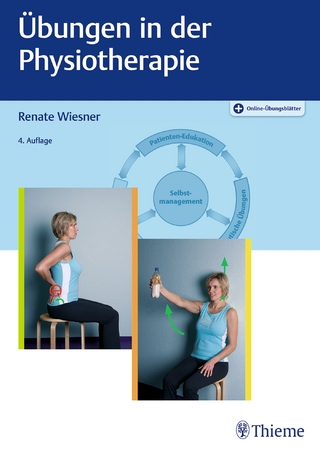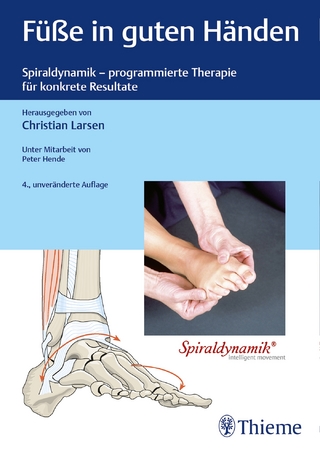
Biomechanics of Coronary Atherosclerotic Plaque
Academic Press Inc (Verlag)
978-0-12-824047-2 (ISBN)
- Titel ist leider vergriffen;
keine Neuauflage - Artikel merken
Jacques Ohayon received his MSc degree in Biomechanical Engineering at University of Compiègne (UTC) in France in 1982 and his PhD in Cardiac Mechanics in 1985 at the University of Paris 12 Val-de-Marne (UPVM). Since 2003, he performs his research at the Laboratory TIMC-CNRS UMR 5525 of Grenoble in the group Cellular/Tissular Dynamics and Functional Microscopy (DyCTiM). From 2006 to 2007 he was an invited senior scientist at the Laboratory of Integrative Cardiovascular Imaging Science at the NIH, USA. His current research interests are in biomechanics of atherosclerotic plaque, plaque detection, plaque rupture prediction, plaque growth and development of new clinical tools for imaging the elasticity of vulnerable plaque based on clinical OCT, MRI and IVUS sequences. Gérard Finet is the Director of the Medical and interventional Cardiology Departments at the Cardiovascular Hospital Louis Pradel, Lyon, France. He received his MD in 1984 and his PhD in Biomedical Engineering and Intravascular Ultrasound Imaging in 1994 at the University Claude Bernard of Lyon, France. He joined the University of Lyon-1 in 1996 as a full Professor of Cardiology. The activities of Dr. Gérard Finet are dedicated to coronary IVUS imaging, coronary artery diseases and valvular diseases. In 1998, he was appointed head of the Interventional Cardiology Department at the Cardiovascular Hospital Louis Pradel. In 2000 he was an invited senior scientist at the Intravascular Ultrasound Imaging and Cardiac Catheterization Laboratories, Washington Hospital Center, Washington, DC, USA. He is known internationally for his pioneering works performed at the University of Lyon, INSERM and Hospices Civils de Lyon on: 1) Multiple plaque ruptures in acute coronary syndrome, 2) Fractal nature of the coronary vascular trees, and 3) Sequential proximal optimizing technique in provisional coronary bifurcation stenting. He has published more than 170 peer-reviewed articles in these fields. Roderic I. PETTIGREW is the CEO of the EnHealth and Executive Dean for EnMed at Texas A&M University and Houston Methodist Hospital. In 1977, Dr. Pettigrew received his Ph.D. in applied radiation physics from the Department of Nuclear Engineering at MIT. In 1979, he received his M.D. from the Leonard M. Miller School of Medicine, University of Miami. From 2002 to 2017, he was the founding Director of the National Institute of Biomedical Imaging and Bioengineering (NIBIB) at the NIH. Prior to his appointment at the NIH, Dr. Pettigrew was Professor of Radiology, Medicine (Cardiology) at Emory University in Atlanta, Georgia, Professor of Bioengineering at the Georgia Institute of Technology, and Director of the Emory Center for MR Research at the Emory University School of Medicine. He is known internationally for his pioneering work at Emory University involving four-dimensional imaging of the cardiovascular system using magnetic resonance (MRI). His current research focuses on integrated imaging and predictive modeling of coronary atherosclerotic disease. Dr. Pettigrew has been elected to membership in the US National Academy of Medicine, the National Academy of Engineering, and the National Academy of Inventors. He has also been elected a foreign member of the National Academy of Sciences, India. Other awards include Phi Beta Kappa, the Bennie Award for Achievement at Morehouse College, the Most Distinguished Alumnus of the University of Miami (1990), the Hall of Fame of the Miller School of Medicine, the Pritzker Distinguished Achievement Award of the Biomedical Engineering Society, the Distinguished Service Award of the National Medical Association, the Pierre Galletti Award of the American Institute of Medical and Biological Engineering, the Inaugural Gold Medal Award of the Academy of Radiology Research, the Distinguished Service Award of the International Society of Magnetic Resonance in Medicine, the Spirit of the Heart Award of the Association of Black Cardiologist, and the Gold Medal of the Radiological Society of North America (RSNA).
Part 1: Biology, Physiopathology, Hemodynamics, Myogenic Responses and Clinical Intravascular Imaging of the Coronary Vascular Wall 1. Biomechanical Regulation of Endothelial Function in Atherosclerosis 2. Molecular mechanisms of the vascular responses to hemodynamic forces 3. Advanced atherosclerotic plaques in animal models versus human lesions: key elements to translation 4. Modeling the Glagov’s compensatory enlargement of human coronary atherosclerotic plaque 5. Measuring coronary arterial compliance and vasomotor response in clinical and research settings 6. Coronary intravascular ultrasound and optical coherence tomography imaging and clinical contexts in coronary hemodynamics 7. The interaction of biochemical, biomechanical and clinical factors of coronary disease: review and outlook
Part 2: Modeling Blood Flow in Arterial Branches and Bifurcations 8. Local blood flow parameters and atherosclerosis in coronary artery bifurcations 9. Effect of regional analysis methods on assessing the association between wall shear stress and coronary artery disease progression in the clinical setting 10. Hemodynamic disturbance due to serial stenosis in human coronary bifurcations: A computational fluid dynamics study 11. Hemodynamic perturbations due to the presence of stents 12. A new reduced-order model to assess the true fractional flow reserve of a left main coronary artery stenosis with downstream lesions and collateral circulations: an in vitro study
Part 3: Fluid-Structure Interaction, Stress Distribution and Plaque Rupture in Arterial Wall 13. In vitro, primarily microfluidic models for atherosclerosis 14. Prediction of the coronary plaque growth and vulnerability change by using patient-specific 3D FSI models based on intravascular ultrasound and optical coherence tomography follow-up data 15. Atheromatous plaque initiation and growth: a multiphysical process explored by an in-silico mass transport model 16. Emergent biomechanical factors predicting vulnerable coronary atherosclerotic plaque rupture 17. Microcalcifications and plaque rupture 18. Identification of coronary plaque mechanical properties from ex-vivo testing 19. Importance of residual stress and basal tone in healthy and pathological human coronary arteries
Part 4: Imaging Inflammatory Biomarkers for in vivo Intravascular Plaque Characterization 20. Intravascular ultrasound imaging of human coronary atherosclerotic plaque: novel morpho-elastic biomarkers of instability 21. Magnetic resonance elastography for arterial wall characterization 22. Noninvasive ultrafast ultrasound for imaging the coronary vasculature and assessing the arterial wall’s biomechanics 23. Pulse wave imaging for the mechanical assessment of atherosclerotic plaques
Part 5: Stenting, Coated Balloon, Drug Elution Systems and Modelling 24. Structure-function relation in the coronary artery tree: theory and applications in interventional cardiology 25. Sequential technique for the stenting of a coronary bifurcation: the re-proximal optimizing technique strategy 26. Modeling the stent deployment in coronary arteries and coronary bifurcations 27. The coated balloon protocol: An emergent clinical technique 28. Endovascular drug delivery and drug-elution systems
| Erscheinungsdatum | 11.05.2020 |
|---|---|
| Reihe/Serie | Biomechanics of Living Organs |
| Verlagsort | San Diego |
| Sprache | englisch |
| Maße | 216 x 276 mm |
| Themenwelt | Medizin / Pharmazie ► Physiotherapie / Ergotherapie ► Orthopädie |
| Technik ► Medizintechnik | |
| ISBN-10 | 0-12-824047-4 / 0128240474 |
| ISBN-13 | 978-0-12-824047-2 / 9780128240472 |
| Zustand | Neuware |
| Informationen gemäß Produktsicherheitsverordnung (GPSR) | |
| Haben Sie eine Frage zum Produkt? |
aus dem Bereich


